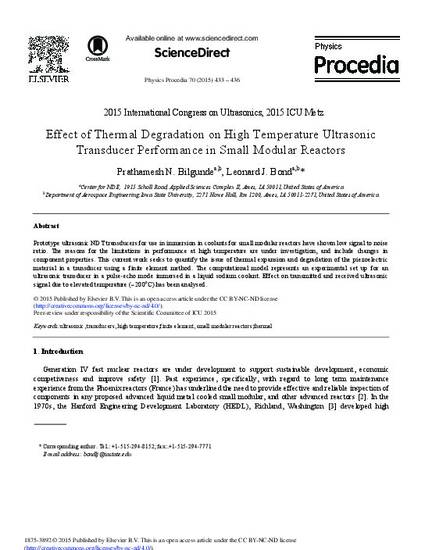
Article
Effect of Thermal Degradation on High Temperature Ultrasonic Transducer Performance in Small Modular Reactors
Physics Procedia
Document Type
Article
Disciplines
Publication Version
Published Version
Publication Date
1-1-2015
DOI
10.1016/j.phpro.2015.08.137
Abstract
Prototype ultrasonic NDT transducers for use in immersion in coolants for small modular reactors have shown low signal to noise ratio. The reasons for the limitations in performance at high temperature are under investigation, and include changes in component properties. This current work seeks to quantify the issue of thermal expansion and degradation of the piezoelectric material in a transducer using a finite element method. The computational model represents an experimental set up for an ultrasonic transducer in a pulse-echo mode immersed in a liquid sodium coolant. Effect on transmitted and received ultrasonic signal due to elevated temperature (∼200oC) has been analysed.
Rights
This is an open access article under the CC BY-NC-ND license.
Copyright Owner
Elsevier B.V.
Copyright Date
2015
Language
en
File Format
application/pdf
Citation Information
Prathamesh N. Bilgunde and Leonard J. Bond. "Effect of Thermal Degradation on High Temperature Ultrasonic Transducer Performance in Small Modular Reactors" Physics Procedia Vol. 70 (2015) p. 433 - 436 Available at: http://works.bepress.com/leonard_bond/16/

This article is from Physics Procedia 70 (2015): 433–436, doi:10.1016/j.phpro.2015.08.137. Posted with permission.